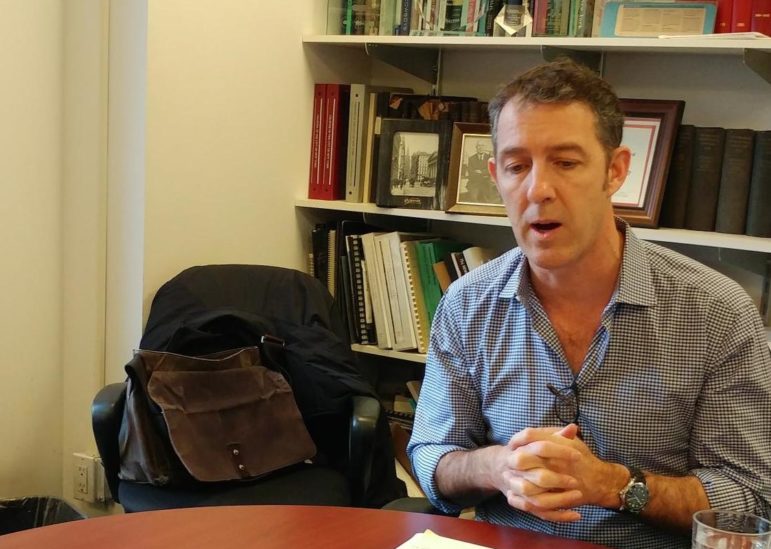
Matthew Sweeney/Gotham Gazette
MoveNY's Alex Matthiessen says the overlap between the congestion pricing debate and the statewide election year is both a burden and a blessing.
A decade after Mayor Bloomberg’s congestion-pricing proposal was sent up to Albany—where it met with inglorious defeat—Albany is moving toward consideration of a new plan to charge drivers for riding into the central business district and use the revenue to repair and improve the transit system.
The chief strategist behind the eight-year effort to get congestion pricing back on the table, Alex Matthiessen, joined City Limits’ Jarrett Murphy and Gotham Gazette’s Ben Max on Tuesday to discuss how the conversation got here, what comes next and the risks his movement is liable to encounter along the way.
Matthiessen began his work in 2010, amid the aftermath of the Bloomberg proposal. Since then, two attempts to get state action on congestion pricing failed. But then the intense period of subway trouble that began last spring and escalated over the summer totally altered the political landscape.
“It really took a transit crisis to focus the minds of the governor and the legislature,” Matthiessen said.
In August, Gov. Cuomo endorsed congestion pricing as a policy whose time had come. In October, the governor named a panel to study the idea. And last week, just days after the governor presented his fiscal 2019 budget, that “FixNYC” panel issued its report.
That report says what everyone knows: The subway system cannot afford to maintain what it has, which in itself is inadequate to the needs of a growing city. But it focuses first on traffic congestion, which is where the doomed Bloomberg plan placed its emphasis, and is not the issue that has driven commuters’ furor over the past year. Traffic in the city is now second-worst in the nation, but Manhattan’s traffic trouble is not because of increased trips into the city—entries are actually down. Instead, the report puts blame first on all the pedestrian plazas and bike lanes the city has installed, before also blaming for-hire vehicles (like Lyft and Uber) and truck traffic.
To address the two crises, the report proposes a three-phase effort, starting with steps to reduce congestion (like better traffic enforcement) and moves to improve and expand transit service. Then the plan starts to charge vehicles for entering the central business district of Manhattan south of 60th street — first imposing the fee on for-hire vehicles, then on trucks, then on everybody.
That could be a tough sell, especially in an election year, Matthiessen acknowledges. But he also notes that many subway- and bus-riding voters are just as worried about their hellish daily subway commute as drivers might be concerned about a potential new toll. “I don’t think [legislators] are going to want to go into a 2018 election having abandoned transit riders,” he says.
One key part of negotiations among the governor and the two legislative houses will be about which short-term transit investments get green-lighted. The FixNYC panel recommended “first investing in public transportation alternatives before implementing a zone pricing plan to reduce congestion” to “enhance the capacity of public transportation alternatives to accommodate those who may choose to leave their vehicles at home upon implementation of a pricing zone and will yield significant private economic benefit to surrounding properties and businesses.”
Hear Matthiessen discussing those issues—and his “thresholds” for what kind of compromise might be acceptable—below.









